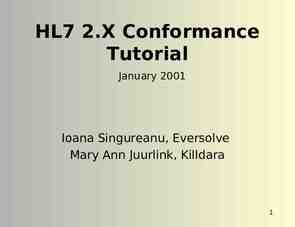Synergistic Processing In Cell’s Multicore Architecture
12 Slides1.83 MB
Synergistic Processing In Cell’s Multicore Architecture Michael Gschwind, et al. Presented by: Jia Zou CS258 3/5/08
Goal for Cell Increase processor efficiency for most performance per area Reduce area per core, have more core in a given chip are Take advantage of the application parallelism – Aimd at data-processing intensive applications
Cell Architecture
Design Philosophy Simple cores, lots of them – Any complexity reduction directly translates into increased performance – Exploiting the compiler to eliminate hardware complexity PPE serves as controller, SPE provides performance – PPE and SPEs share address translation and virtual memory architecture
Synergic Processing Unit
Data alignment for Scalar and Vector Processing SPU has no separate support for scalar processing – Unified scalar/SIMD register – Unified execution unit – Simpler control unit Software-controlled data-alignment approach – Simplifies scalar data extraction, insertion, sharing between scalar and vector data Increases compiler efficiency
Scalar Layering
Data-Parallel Conditional Execution
Deterministic Data Delivery SPE has local stores – 4Kb – 4Gb address range – Stores both instruction and data – All memory operations that the SPU executes refer to address space of this local store – Different from cache memory by: No cache coherency problem Offers low and deterministic access latency
Statically Scheduled ILP Instruction fetches are scheduled statically Delivery up to two instructions per cycle – One to each complex Static branch prediction: prepare-to-branch instruction initiate instruction prefetch
SPE Microarchitecture
Design Goals and Decisions







